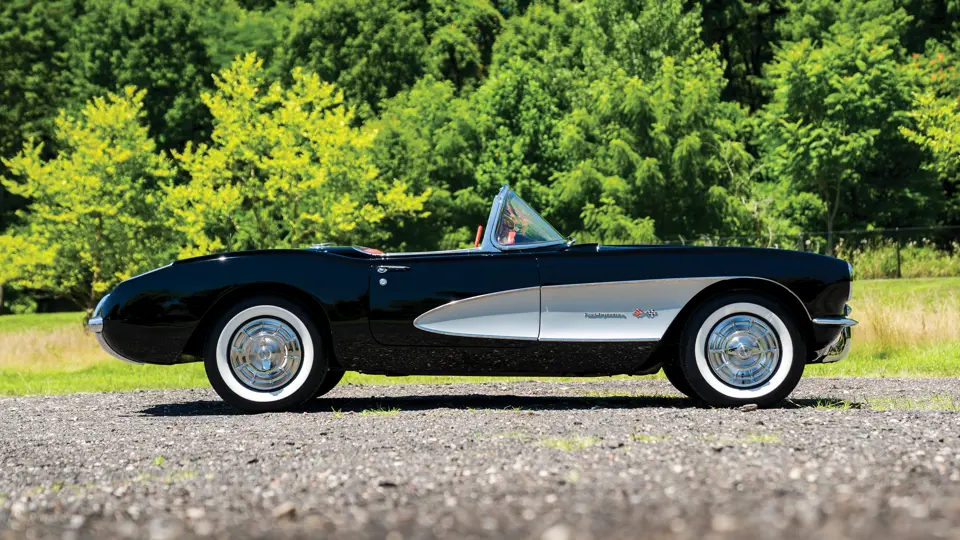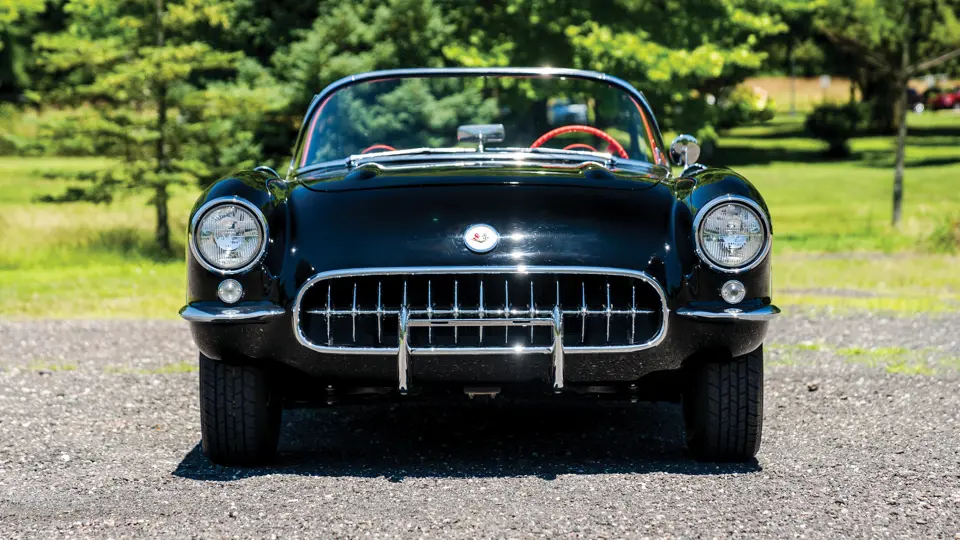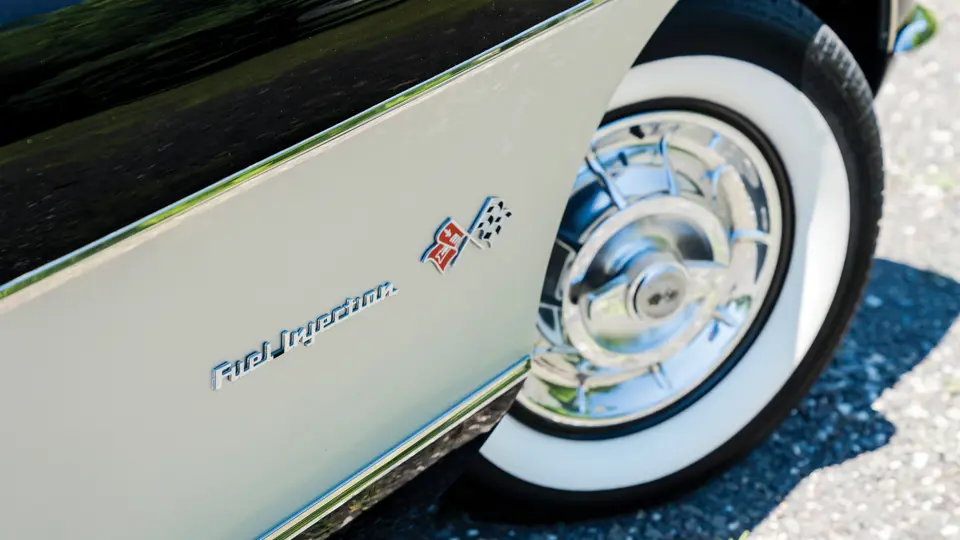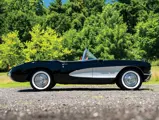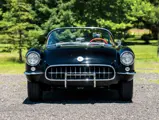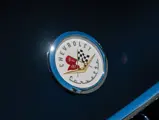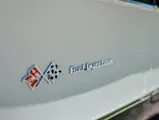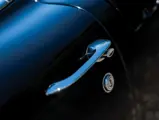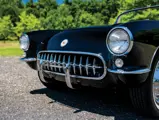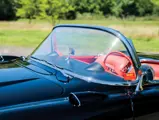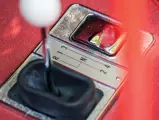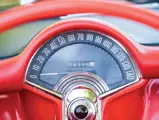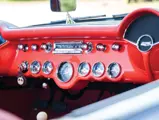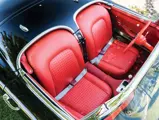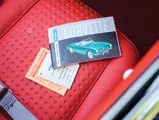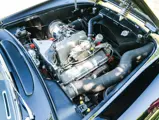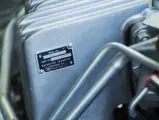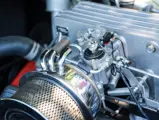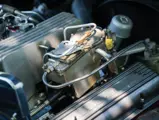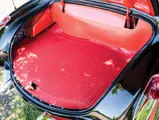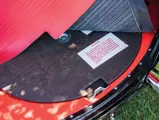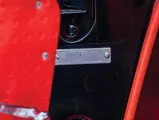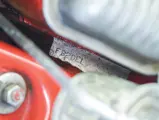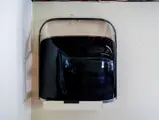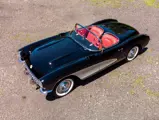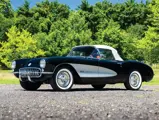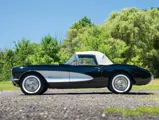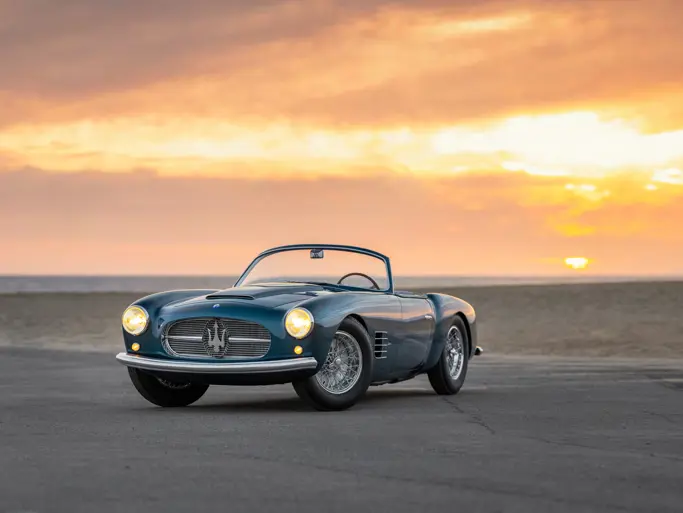Thanks to the continued efforts of the now famous Zora Arkus-Duntov, the Corvette was becoming a serious sports car by the mid-1950s. Duntov had joined the Corvette team just one month before production began in 1953, but his engineering efforts and racing background proved its worth in the continual improvements the Corvette enjoyed. In fact, Corvette went racing in 1956, debuting at Sebring and winning both the SCCA and Cal Club championships.
For 1957, a larger 283-cu. in. V-8 was offered and available in five versions, including the vaunted 283-hp version with Rochester Ramjet fuel injection – the first factory-installed engine to offer one horsepower per cubic inch. The $500 extra cost item was ordered by 1,040 customers of a total 6,339 Corvettes built (more than double Corvette production for 1956). A four-speed manual transmission also became available at mid-year. Suddenly, Chevrolet truly meant business.
Two production Corvettes finished 12th and 15th overall and 1-2 in the GT class at Sebring and Corvette swept the first four places at Nassau Speed Weeks. Corvettes dominated C-production at Daytona finishing 1-2-3 in both standing start acceleration and the flying mile.
As the mightiest of ’57 Corvettes, this example is fitted with the optional “Fuelie” 283/283 V-8 and T-10 four-speed manual transmission; arguably the most wanted combination among collectors today. The consignor’s representative describes this as being an original fuel-injected car that had no body damage prior to restoration. Restored by the consignor, a Corvette expert, it was described as a rather simple restoration due to the condition of the car, which was complete in every way. The car has been regularly used and maintained and is deemed a “well-sorted” car.
Finished in Onyx Black with Inca Silver coves and a red interior, it also includes the optional factory hardtop finished in matching black. Attesting to the quality of the restoration, it received an NCRS Top Flight Award in June 2007 . . . and still looks great today.




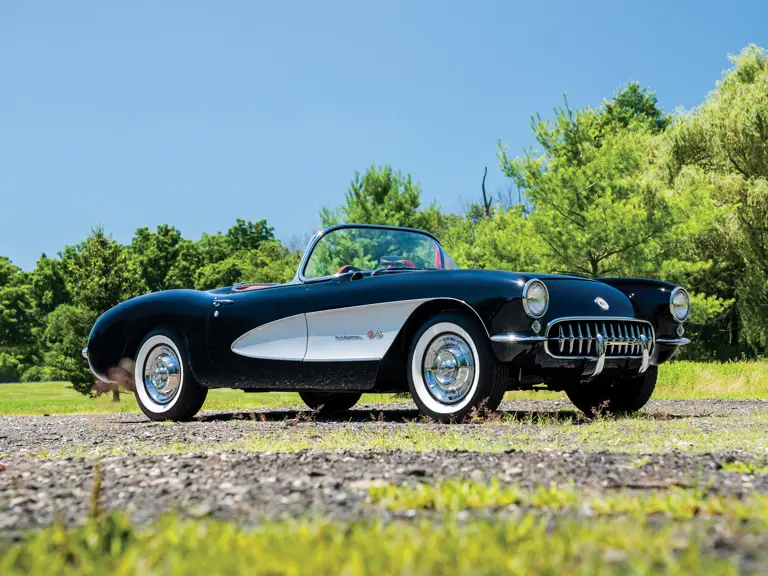
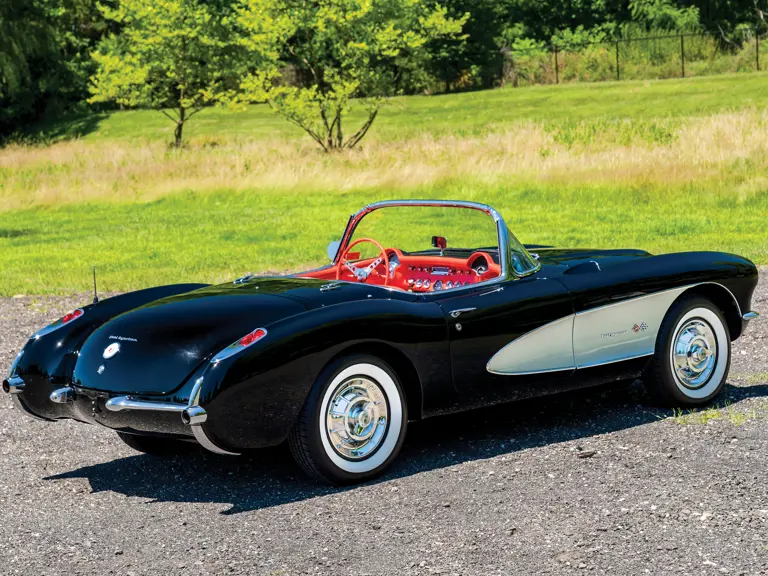
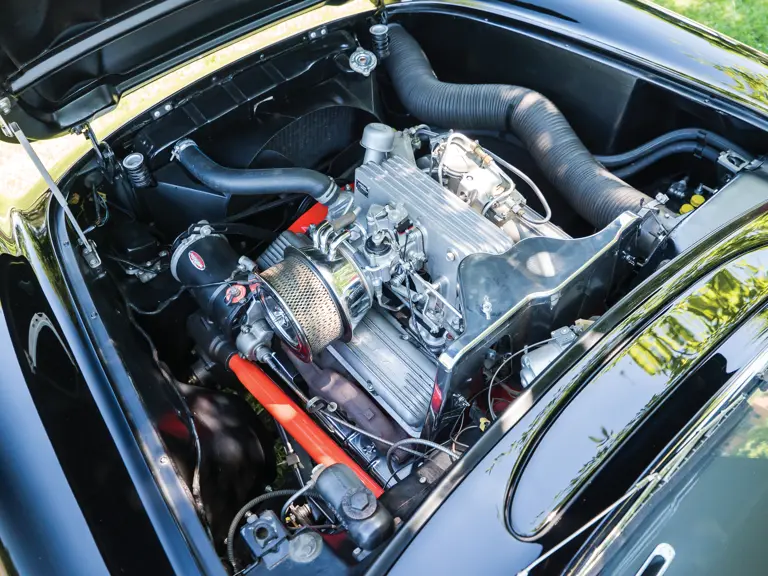

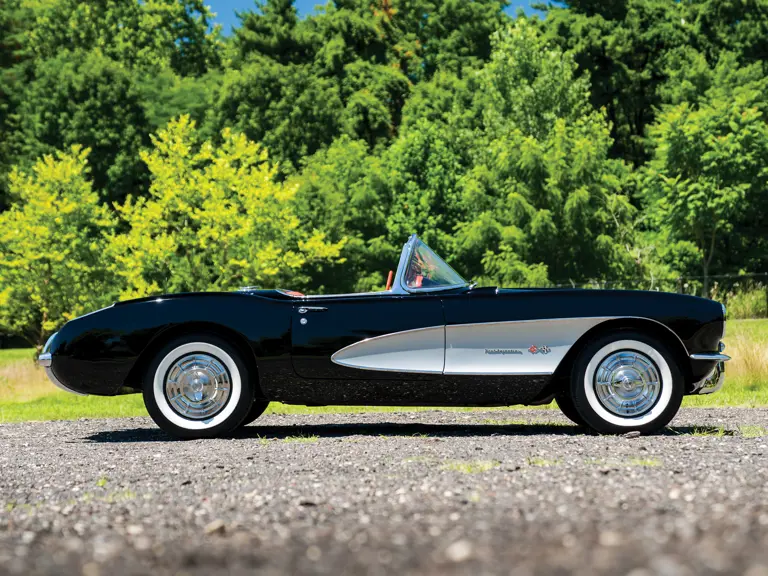
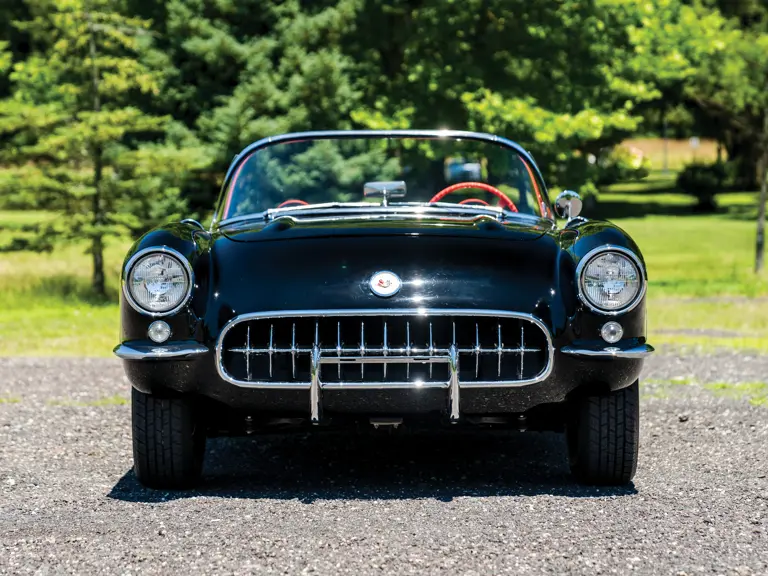
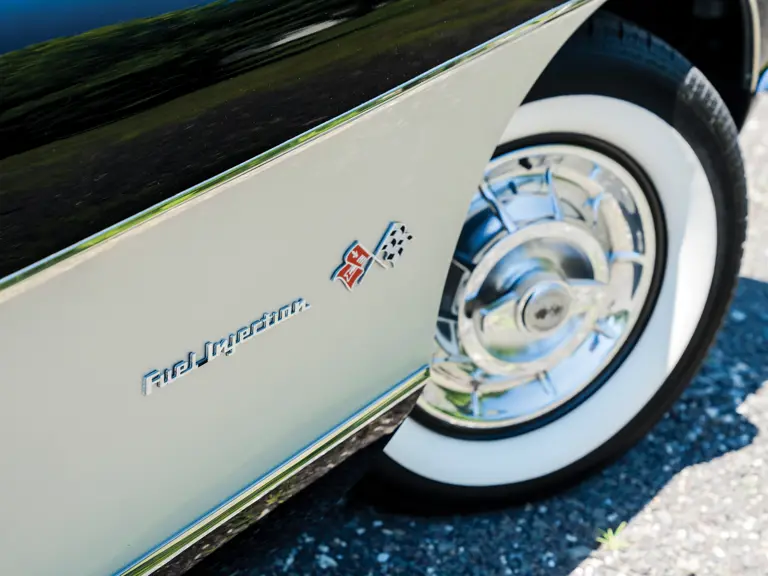
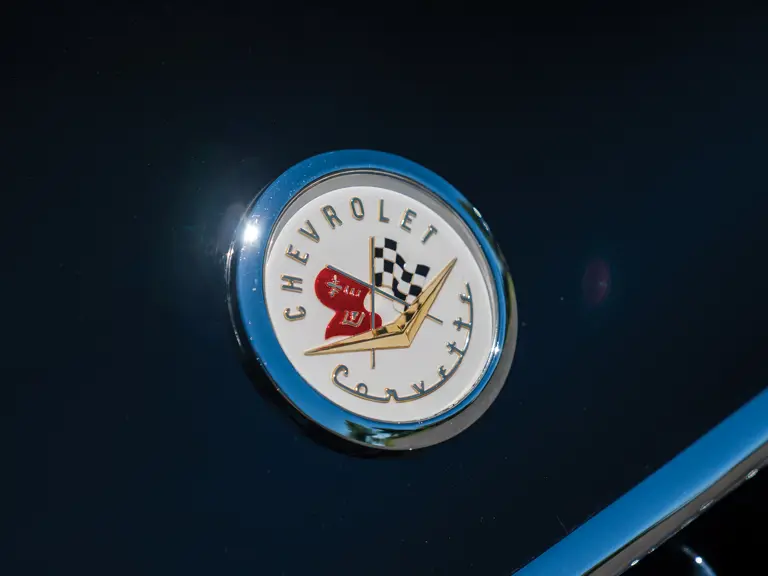
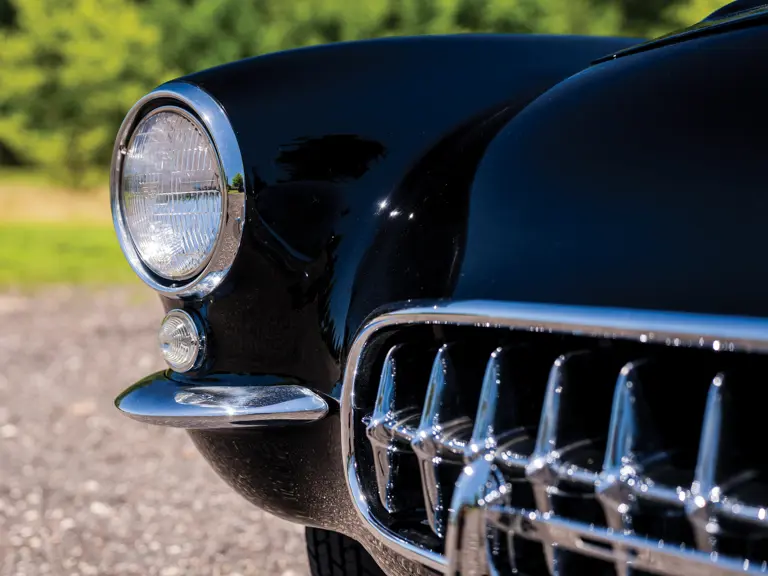
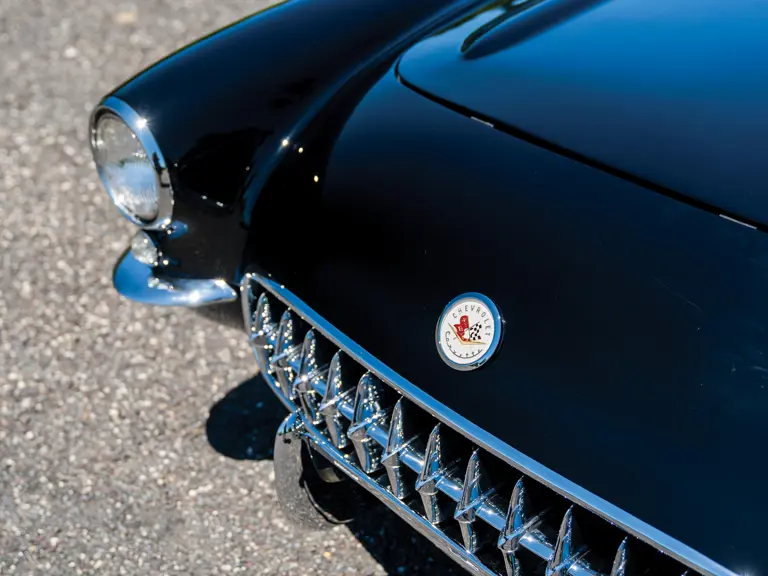
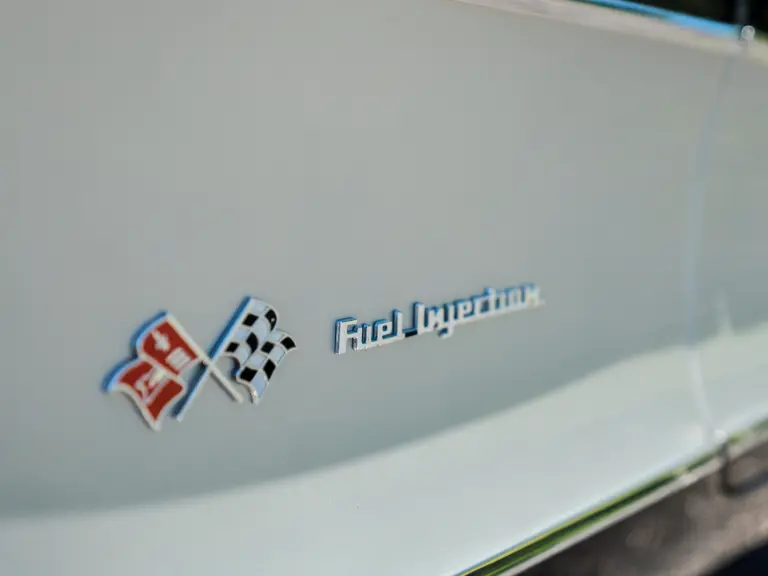
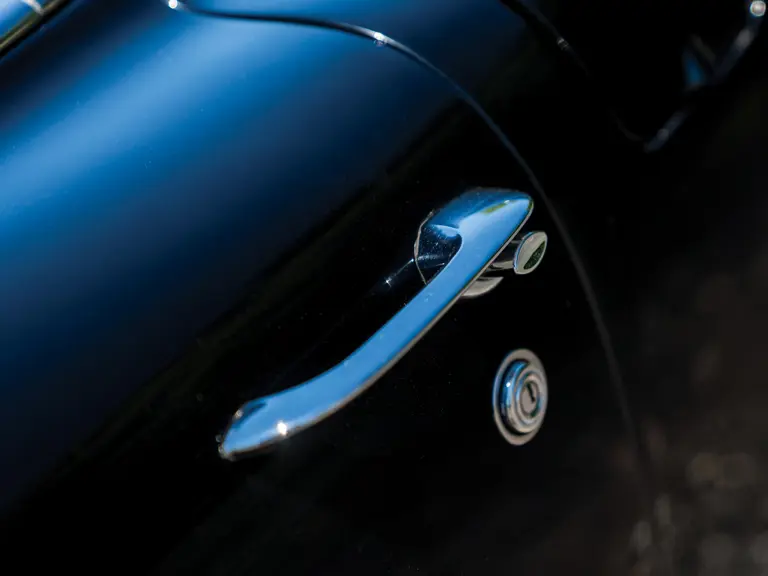
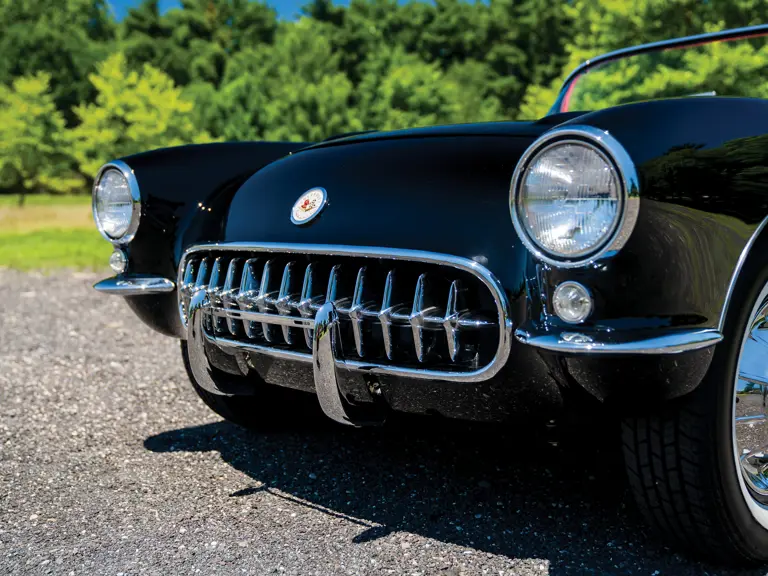
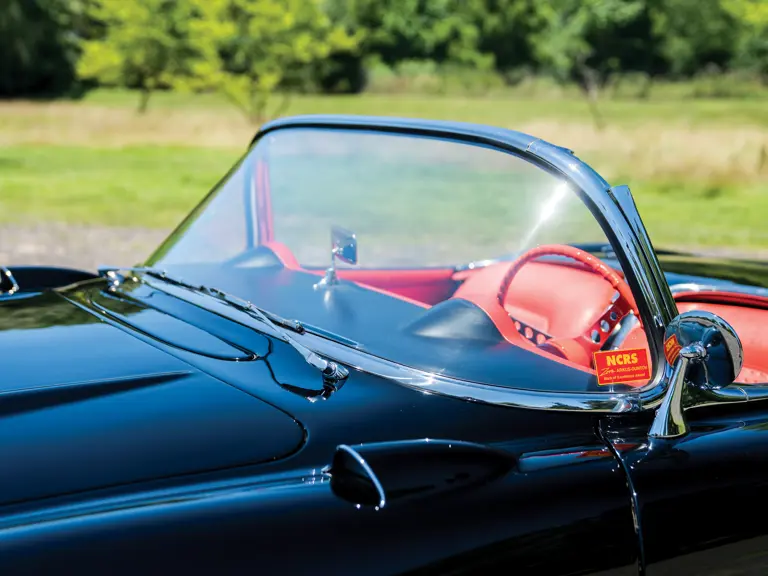
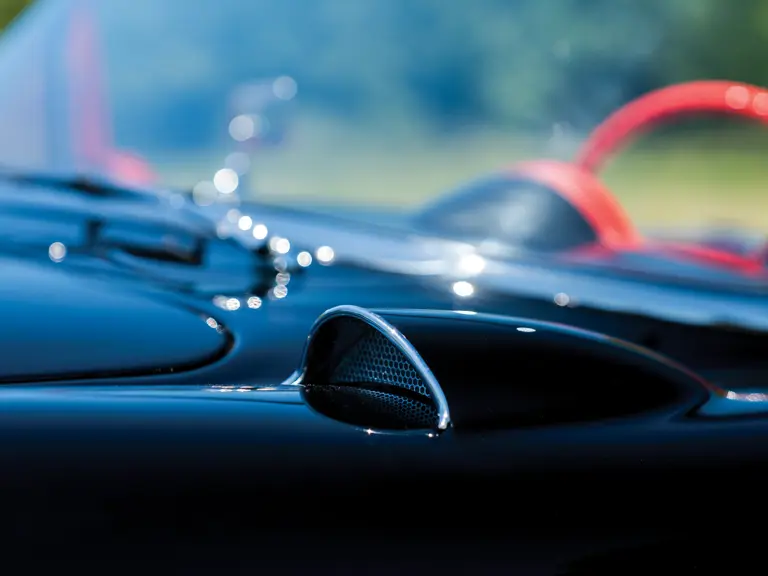

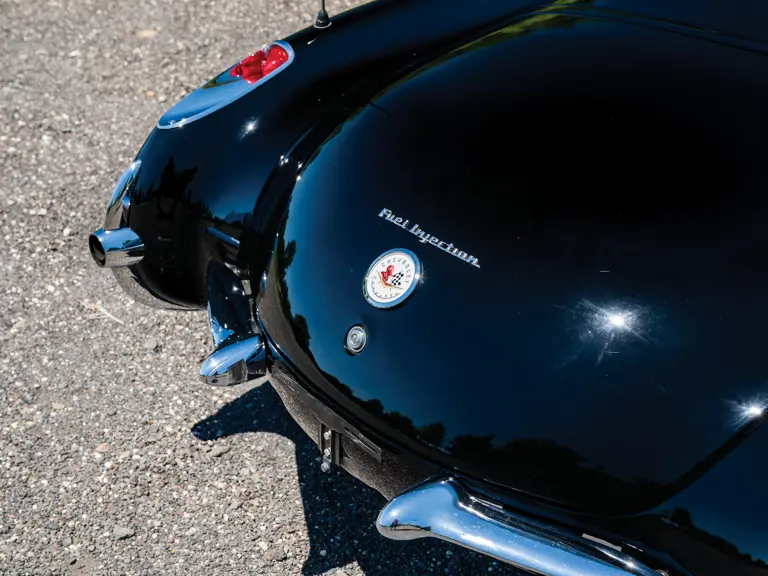
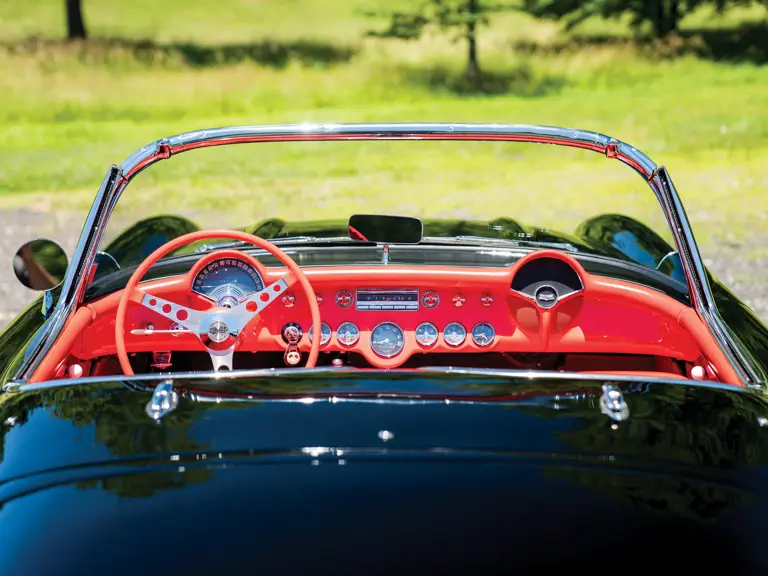

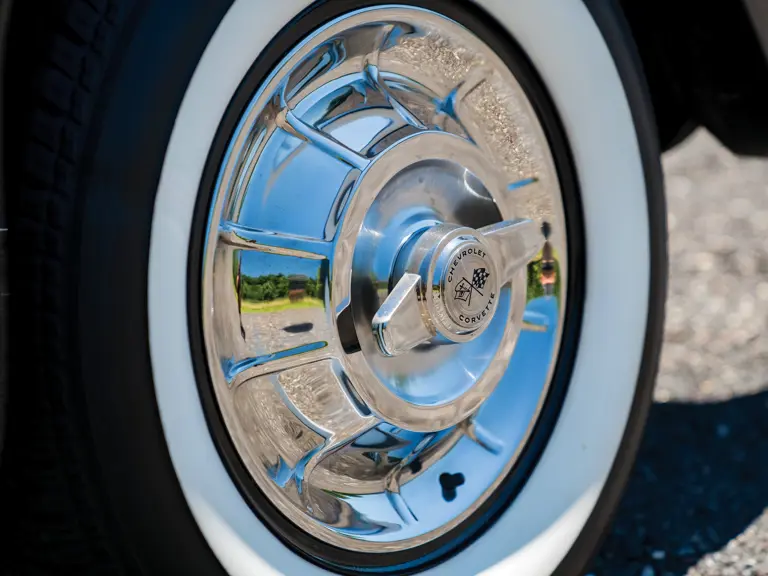
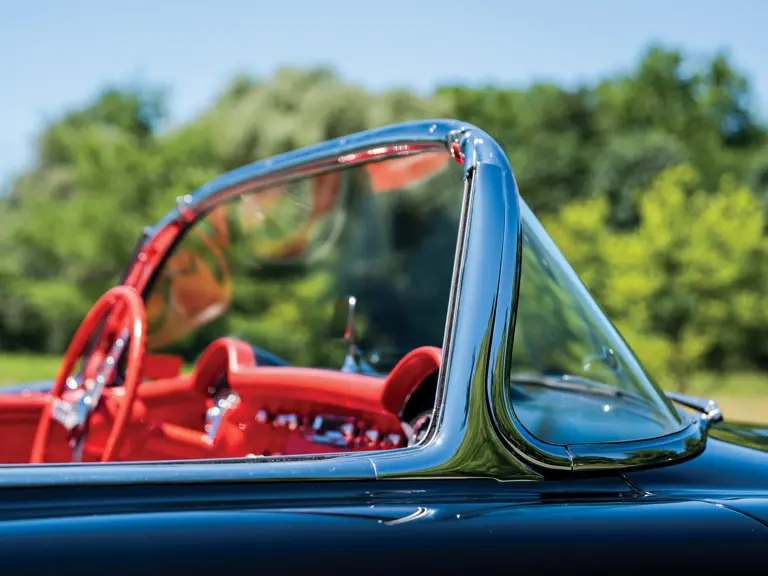

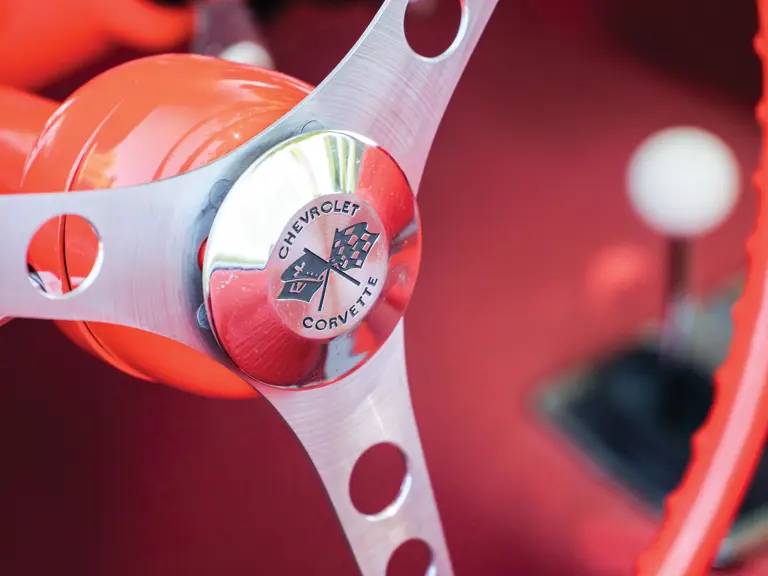
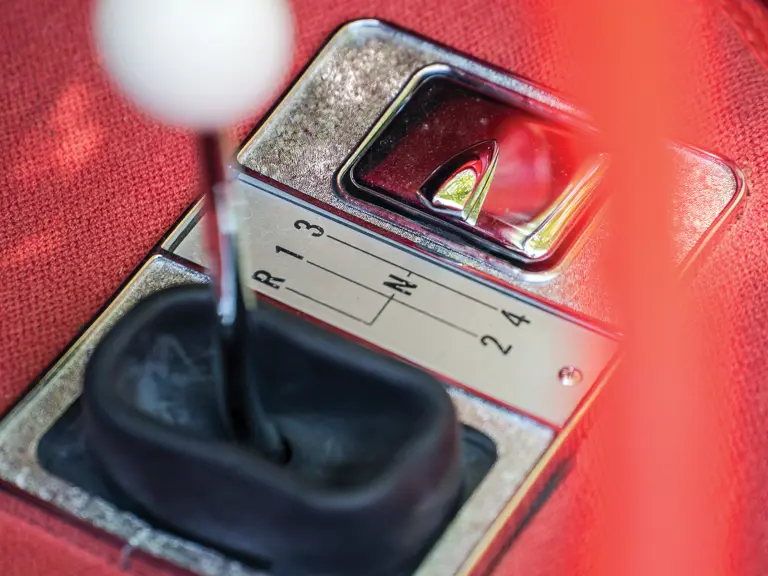
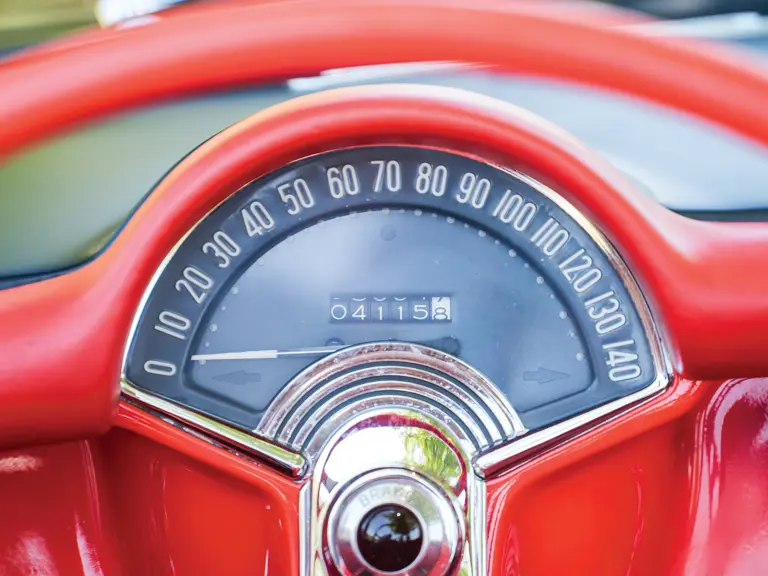




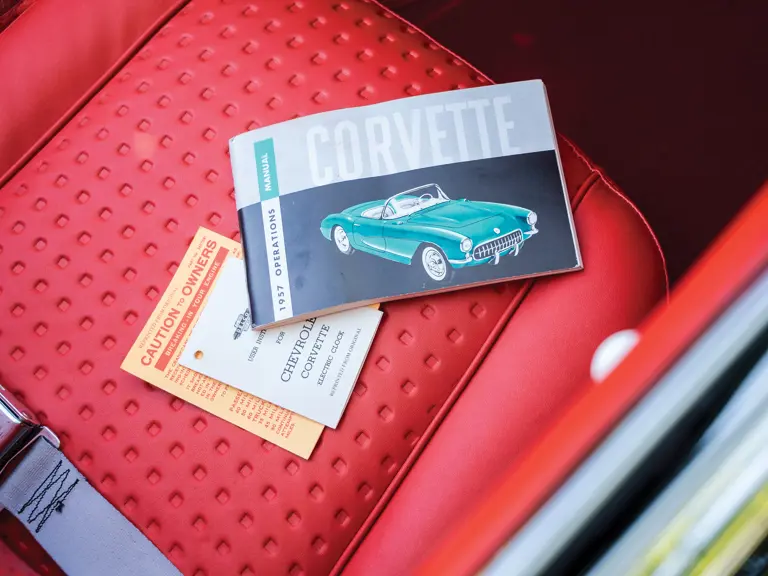
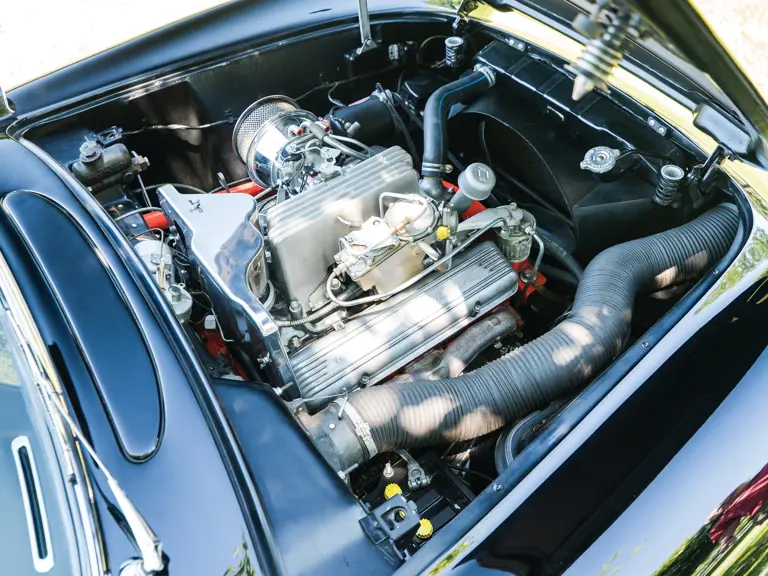
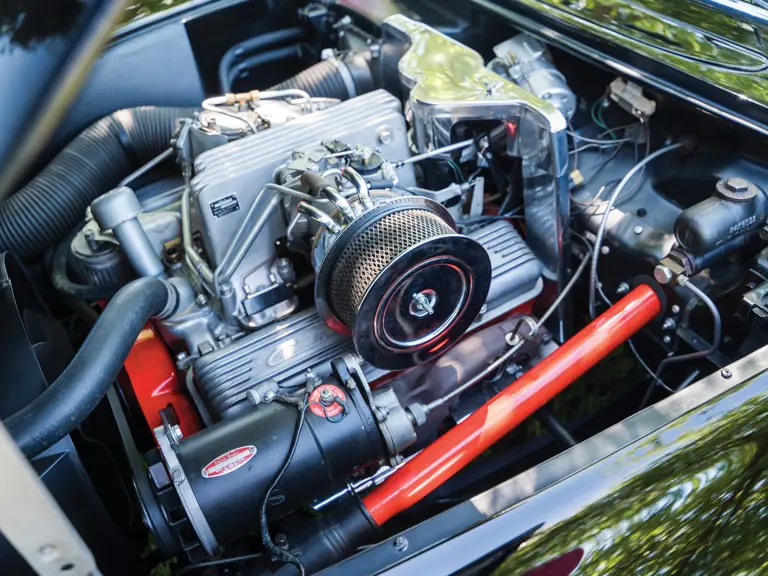
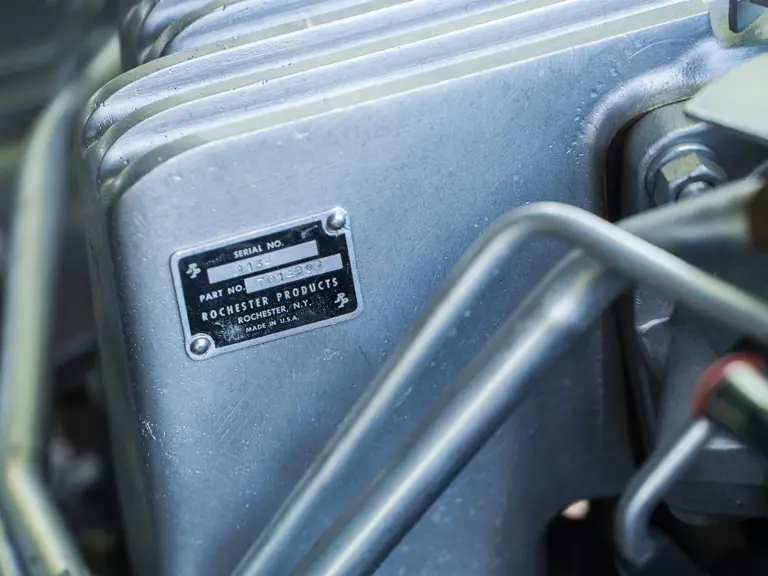
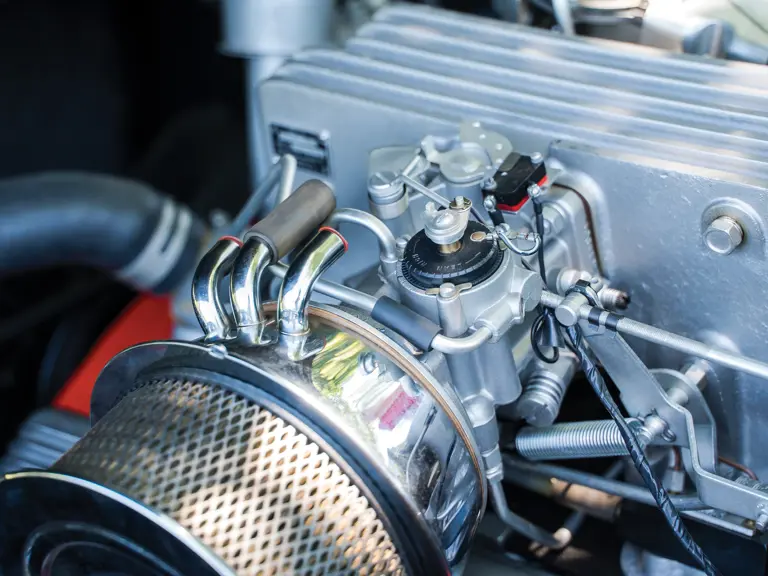
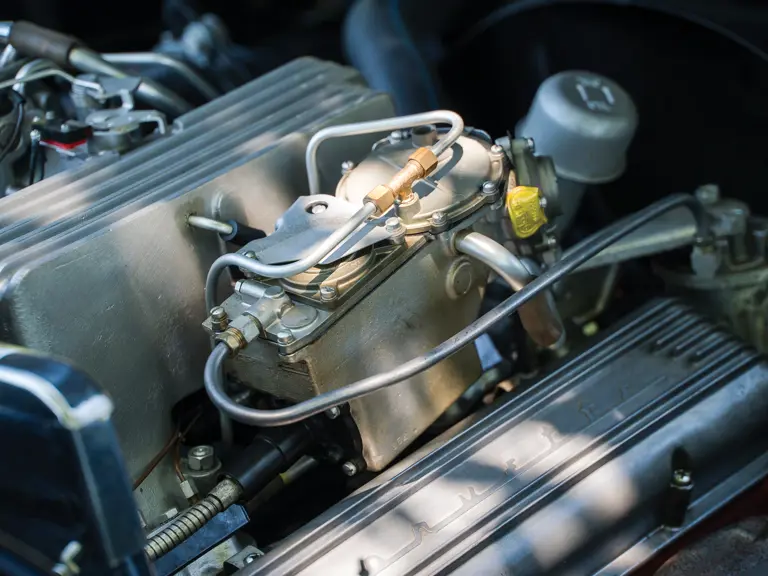

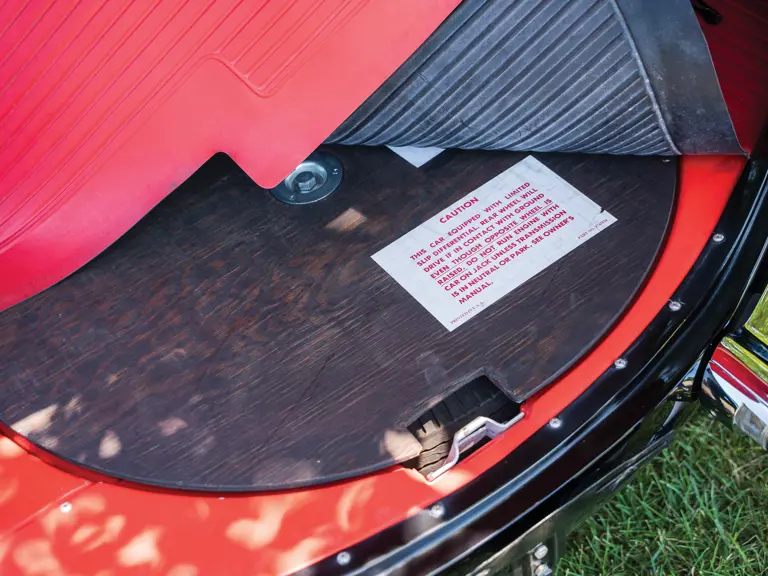
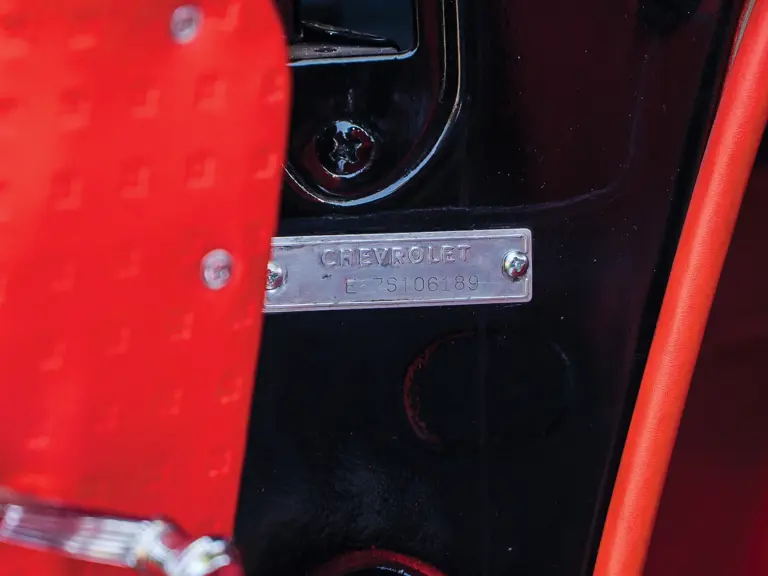
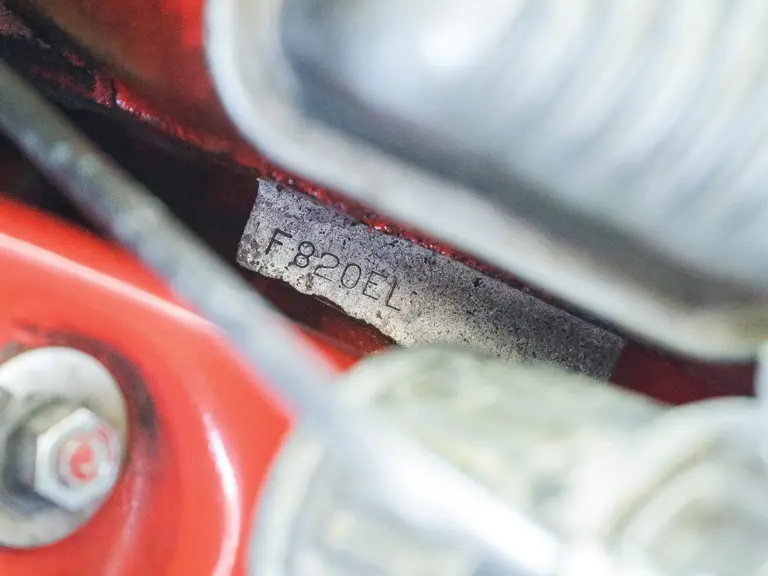
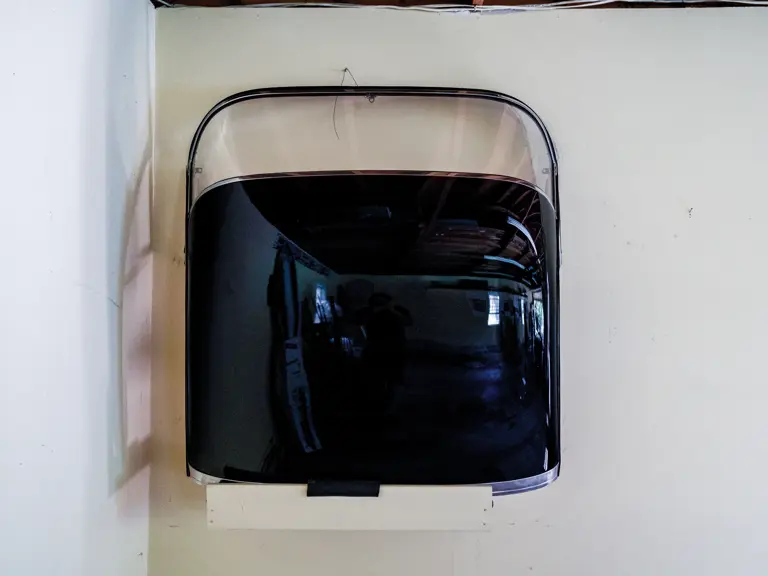
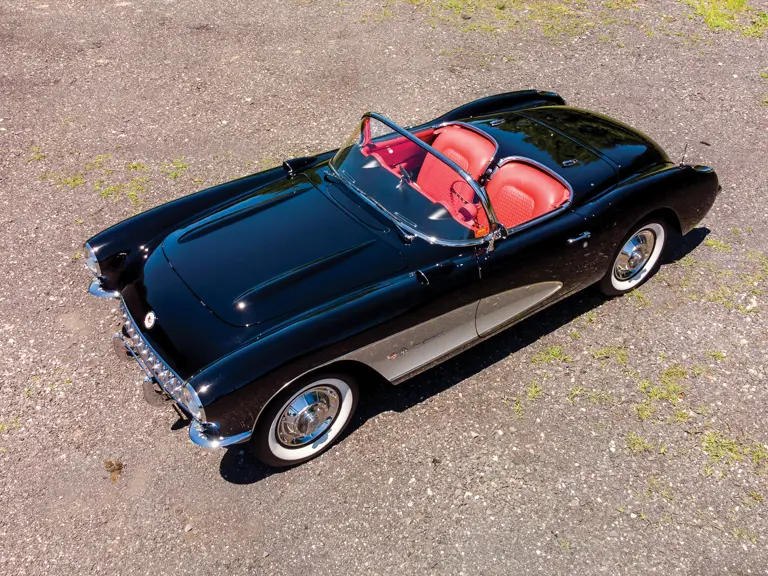
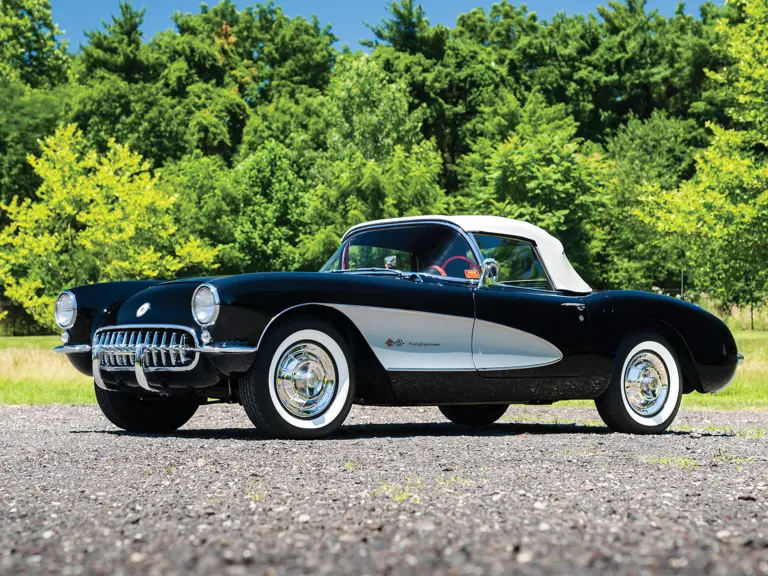
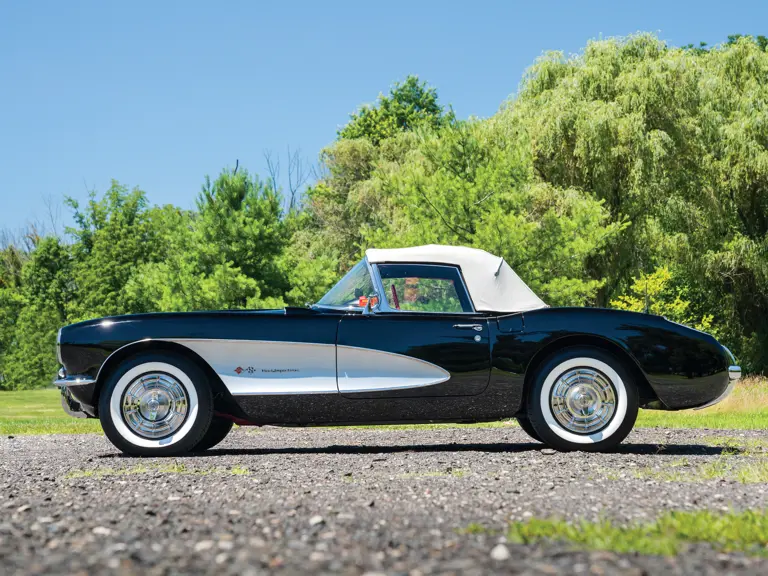

 | Hershey, Pennsylvania
| Hershey, Pennsylvania
